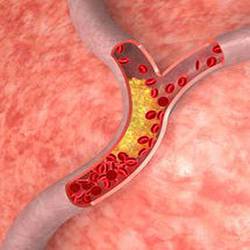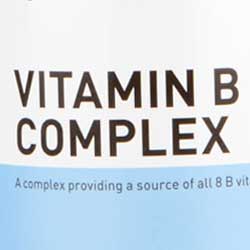DRI / RDA for Nickel and Cobalt + Vit C - E - B12 - B15
| Cellular Nutrition| Nickel | Cobalt | ||||
Nickel
Estimated daily intake of Nickel from food and water worldwide is 70 mcg - 170 mcg / day.
|
Cobalt
Estimated daily intake of Cobalt from food and water worldwide is 5 mcg - 40 mcg / day.
|
||||
| Best time to take Nickel: Not relevant as there are no supplements available. | Best time to take Cobalt: Not relevant as there are no supplements available. | ||||
|
Cellular / Intracellular Attributes and Interactions:
|
|||||
| Nickel Synergists: Iron, tin, phosphorus, Vitamin C, bismuth, cobalt*, germanium. | Cobalt Synergists: Manganese, sodium, Vitamin B12, nickel*, iodine (low to normal amounts) | ||||
| Nickel Antagonists / Inhibitors: Manganese, zinc, calcium, copper, cobalt*, sodium, Vitamin E, phytic acid. | Cobalt Antagonists / Inhibitors: Potassium, iron, magnesium, chromium, nickel*, phosphorus, Vitamin C, protein. | ||||
| * Dose-dependent - They are co-factors at normal levels, and antagonists at higher levels. | |||||
High/Low Levels / Deficiency / Toxicity - Symptoms and Risk Factors: |
|||||
| Low Nickel: Hyperglycemia (high blood sugar), low blood pressure, depression, liver disease, anemia, low stomach acid, sinus congestion, fatigue, low adrenals. | Low Cobalt: May lead to pernicious anemia, severe fatigue, shortness of breath, low thyroid. | ||||
| High Nickel: Angina, skin rash, hypoglycemia, decreased estrogen, shortness of breath, asthma, nausea, lowered pulse, vomiting, diarrhea, headache, stomach irritation, increased protein in urine, increased red blood cells, heart failure (from 50,000 - 100,000 x daily intake). | High Cobalt: Angina, panic-anxiety attacks, shortness of breath, asthma, cardiomyopathy, congestive heart failure, polycythemia, (hypo)thyroid problems, neurological problems, overproduction of red blood cells, skin rash, infertility, dermatitis. | ||||
| Nickel Sources: Unrefined whole grains, oats, nuts, oysters, soybeans, buckwheat seed, peas, beans, lentils, herring, tea. | Cobalt Sources: Buckwheat, dairy, nuts, figs, green leafy vegetables, cabbage, meats, shellfish, sea vegetables. | ||||
DRI - Dietary Reference Intake
RDA - Recommended Dietary Allowance
AI - Adequate Intake
UL - Tolerable Upper Intake Level
RDA - Recommended Dietary Allowance
AI - Adequate Intake
UL - Tolerable Upper Intake Level
| Vitamin C / Ascorbic Acid | Vitamin E | ||||
Vitamin C / Ascorbic Acid
|
Vitamin E
|
||||
| Best time to take Vitamin C: Morning - evening in divided doses, preferably with the 3 main meals. | Best time to take Vitamin E: Anytime during the day; preferably with some (fatty) food. | ||||
High/Low Levels / Deficiency / Toxicity - Symptoms and Risk Factors: |
|||||
| Low Vitamin C: Scurvy, slow wound healing, anemia, easy bruising, shortness of breath, fatigue, nosebleeds, frequent infections, gastrointestinal problems, depression, chronic gingivitis, increased risk for various cancers, impaired formation and maintenance of collagen, impaired multiple hormonal functions, dermatitis, arthritis, reduced insulin production, some types ofmale infertility, vascular degeneration, gallstones. | Low Vitamin E: Increased oxidation of free radicals, increased risk for various cancers, cardiovascular disease, hemolytic anemia, angina (left-sided), leg cramps, increased lipid peroxidation, dry skin, irritability, reproductive abnormalities, miscarriage, PMS, fibrocystic (breast) disease, gallstones, cataracts, bruising, dermatitis. | ||||
| High Vitamin C: Diarrhea, abdominal cramps, high stomach acid, increased urination, insomnia, irritability, joint pains, osteoporosis, headaches, hypoglycemia, weakness, reduced estrogen, PMS, may increase infections by causing copper deficiency, reduced estrogen, reduced progesterone, reduced prolactin. | High Vitamin E: Altered immunity, altered blood clotting, fatigue, reduced thyroid functions, increased Vitamin C, Vitamin A, or calcium requirements, cardiovascular disease / stroke, muscle weakness, headaches, raised or lowered blood pressure, nausea. | ||||
| Vitamin C Sources: Citrus fruit, green peppers, sweet and hot peppers, potatoes, rose hips, currants and other berries, kale, tomatoes, broccoli, cabbage, spinach, watercress. | Vitamin E Sources: Wheat germ, seeds, nuts, sweet potato, whole unrefined grains, vegetable oils, olives, corn, apricot oil, margarine, green leafy vegetables. | ||||
DRI - Dietary Reference Intake
RDA - Recommended Dietary Allowance
AI - Adequate Intake
UL - Tolerable Upper Intake Level
RDA - Recommended Dietary Allowance
AI - Adequate Intake
UL - Tolerable Upper Intake Level
|
Vitamin B12 (Hydroxocobalamin) Vitamin B12 (Methylcobalamin) Vitamin B12 (Cyanocobalamin) Vitamin B12 (Adenosylcobalamin) |
Vitamin B15 - Pangamic Acid - (No USRDA - Suggested) | ||||
Vitamin B12 (Hydroxocobalamin)
|
|||||
|
AGE
0-6 months 6-12 months 1-10 years 11-18 years male 19+ years male 11-18 years fem. 19+ years fem. ------------------- UL Therapeutic Range |
DRI (RDA)
0.4 mcg AI 0.5 mcg AI 0.7 - 2.0 mcg 2.4 mcg 2.4 mcg 2.6 mcg 2.8 mcg N/A 100 mcg - 10 mg |
Note that Methylcobalamin and Adenosylcobalamin are rapidly converted to Hydroxocobalamin in a presense of UV light.
Vitamin B15 - Pangamic Acid - (No USRDA - Suggested)
|
AGE
0-6 months 6-12 months 1-10 years 11-18 years male 19+ years male 11-18 years fem. 19+ years fem. ------------------- UL Therapeutic Range |
DRI (RDA)
10 - 25mg 25mg+ 10 - 25mg 25mg+ N/A 50mg - 500mg+ |
* May be substituted with DMG (Dimethylglycine) to increase pangamic acid production in the body.
High/Low Levels / Deficiency / Toxicity - Symptoms and Risk Factors:
Insomnia, skin rash, increased Vit B15 requirements, optic nerve atrophy(in someone with Leber's disease), some types of leukemia, liver and kidney diseases, may worsen symptoms of mitral valve prolapse, hyperthyroid, numbness / tingling in right arm or face, hypokalemia, anxieties, panic-anxiety attacks, heart palpitations, may increase / stimulate tumor / cancer cell division.
Methylcobalamin or Adenosylcobalamin are the preferred forms of Vitamin B12 if cyanocobalamin is not tolerated. However, although relatively rare, side effects are possible with all forms.
DRI - Dietary Reference Intake
RDA - Recommended Dietary Allowance
AI - Adequate Intake
UL - Tolerable Upper Intake Level
RDA - Recommended Dietary Allowance
AI - Adequate Intake
UL - Tolerable Upper Intake Level

 Manganese may help with some symptoms of Parkinson's disease such as muscle rigidity and twitching...
Manganese may help with some symptoms of Parkinson's disease such as muscle rigidity and twitching...
 Research shows that phytosterols such as beta-sitosterol may help normalize the function of natural killer cells and T-helper lymphocytes...
Research shows that phytosterols such as beta-sitosterol may help normalize the function of natural killer cells and T-helper lymphocytes...
 Iron deficiency may be suspect with some forms of ADHD. 84% of children with ADHD were found to have abnormally low levels of ferritin...
Iron deficiency may be suspect with some forms of ADHD. 84% of children with ADHD were found to have abnormally low levels of ferritin...
 A high intake of B Vitamins can trigger heart palpitations, HBP, major complications in patients with congestive heart disease...
A high intake of B Vitamins can trigger heart palpitations, HBP, major complications in patients with congestive heart disease...